Does your opponent use SEO Black Hat? Here's how to detect that
Black Hat SEO, also known as black hat SEO, negative SEO is a collection of illegal SEO tactics and tricks for Google but helps the Web to top up in a "quick" way.
It can be said that Google is the best search engine in the world today. However, it is worth noting that many SEOers develop Google "trick" techniques to achieve their goals, such as using duplicate content, backlinking, spam links .
Is your opponent using Black Hat SEO techniques? The answer is in the following article of Network Administration.

1. Does your opponent use Black Hat SEO?
Step 1. Check the visit
One of the ways to determine if your opponent uses SEO tips is to check your opponent's hits.
The easiest way to check your opponent's hits is to use Ahrefs Positions Explorer.
Very simply, just visit Ahrefs Positions Explorer, enter your rival domain name in the tool and select SEARCH .

On the dashboard you will see a graph showing Web page visits over time.

If the visitor drops suddenly, then your opponent is receiving a "penalty" from Google.
You can use a monitoring tool like Google Grump to compare data for the day and confirm if your opponent is receiving Google penalties.
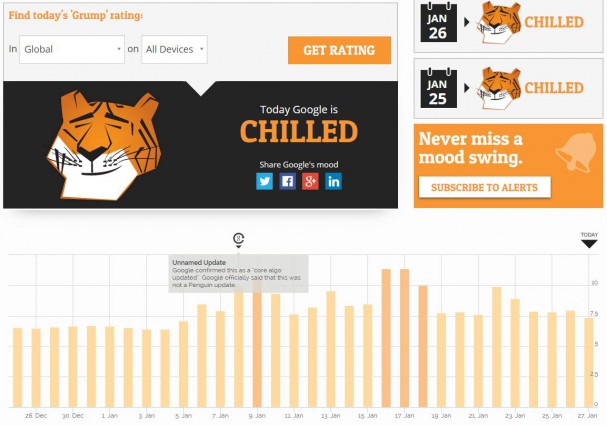
Step 2: Review backlink
Just like when you rummage through someone's wardrobe, the opponent's backlink profile can reveal to you a lot of their information.
Ahrefs will help you have an overview of your opponents.
Just enter the competitor's domain name with you in Ahrefs Site Explorer. On the dashboard you will see a graph showing the growth (or decrease) of both referral domains and referral pages for your competitor's website.
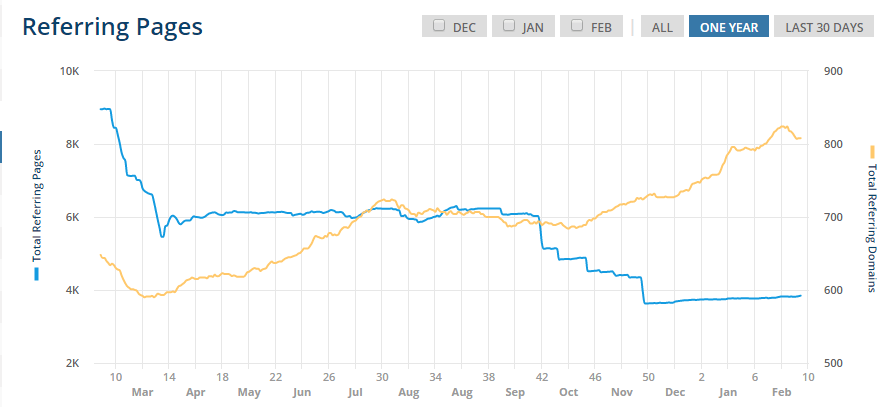
Checking visits is the first step to determine the spike on new links on the competitor's page. Could this be the clue for you to determine whether your opponent is using, "cramming" a whole bunch of blackhat?
1. Quality links
The first is the competitor's Sitelink analysis:
Sitelinks you can understand are website links, which are automatically generated links and may appear under the search results for your site. If you don't want the page to appear as a sitelink, you can demote it. Only website owners and users with full rights can downgrade website links through Google's Webmaster tool administration tool. Users cannot impact but only sitelinks.
- The quality of the website? (such as the stable interface, the minimum number of ads, the number of shares on social networks .).
- Are the topics relevant to the page?
- If your opponent is in a fixed site niche, the links may be related or not related to the site.
- The purpose of placing keywords related to the page.
If in-depth analysis, you can know the number of website visitors and can determine whether your competitor's website is part of the rental affiliate network.
In short, low quality Sitelinks or Sitelinks are not relevant to your competitors, most likely your competitors are using "illegal" SEO.
2. Link Anchor Text
After you've finished analyzing the backlink, continue to the Anchor Text test.
Anchor text is the text used to display the link and is used by everyone to link to your site. In other words, it is the specific text link that users click.
Here are some signs to let you know:
- Anchor text is related to whether the opponent builds a new content.
- And if not, the keywords and pages they are using are a cunning tactic.
How to use Ahrefs Site Explorer to see the anchor overview of your opponent's text distribution?
On the opponent's Site Explorer overview page, click Inbound Links => Anchors.
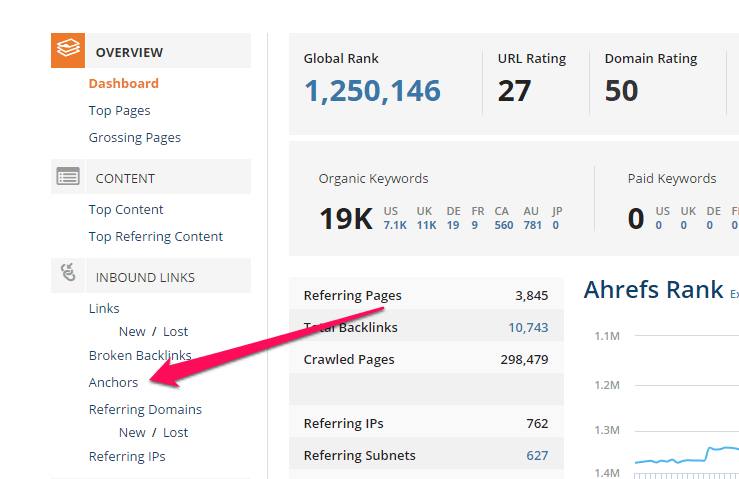
At this point on the screen you will see a report panel showing the page anchor points + the number of Dofollow and the total number of domains for each anchor.
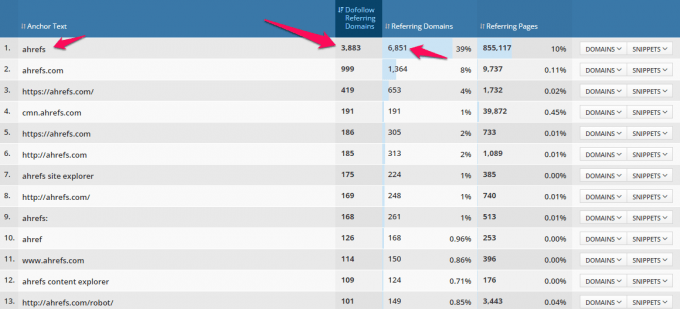
About Dofollow you can understand that hyperlinks will tell the search engine that it is a reputable link and have a reference value and affect the link outbound element of that website.
If the anchor text using links is often the same, the level of search for keywords is high (eg SEO tool - SEO tool), most likely this is an illegal link.
Note:
If you want to see the actual domain of any anchor, you can click on DOMAINS .
Step 3: Monitor!
Tracking rival rankings is also a great way to flag certain "shady" things going on.
If a website tends to rank well, but the number of shares (sharing) on Facebook is too low, this may be a sign of some "shady".
You can use tools like SERPstat to compare Organic keywords "in contrast" with the number of Facebook shares. If most of these top TOP rankings have no or very few Facebook shares, then you need to consider this value carefully.
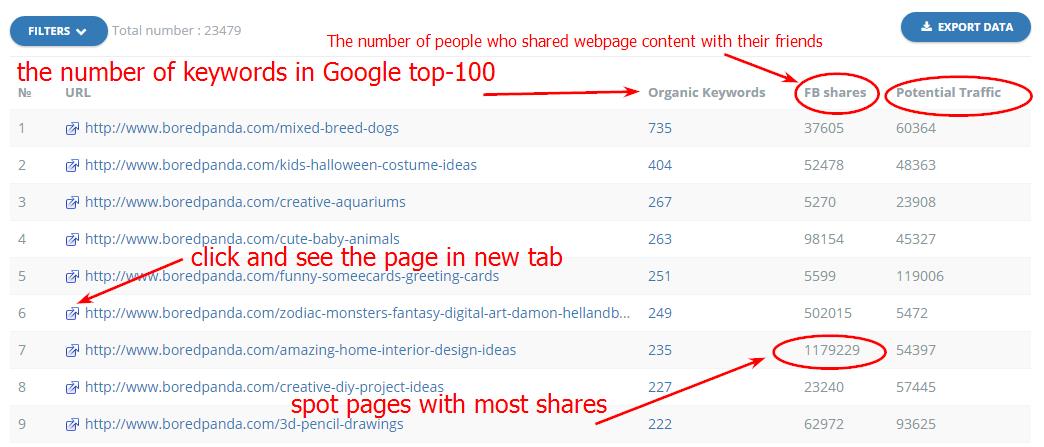
In addition, you can use Ahrefs Positions Explorer to see the "up and down" of each option on your opponent's rankings.
On the dashboard, click Organic Research => Recent Changes .
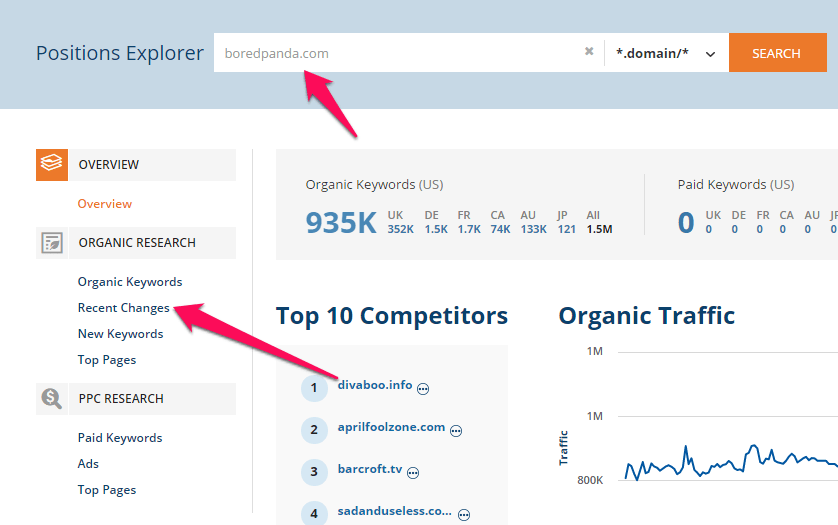
This will generate daily reports for you and show the fluctuations in the ranking of individual keywords.
In the example below you can see the keyword "invention idea" in the top 100 search results.
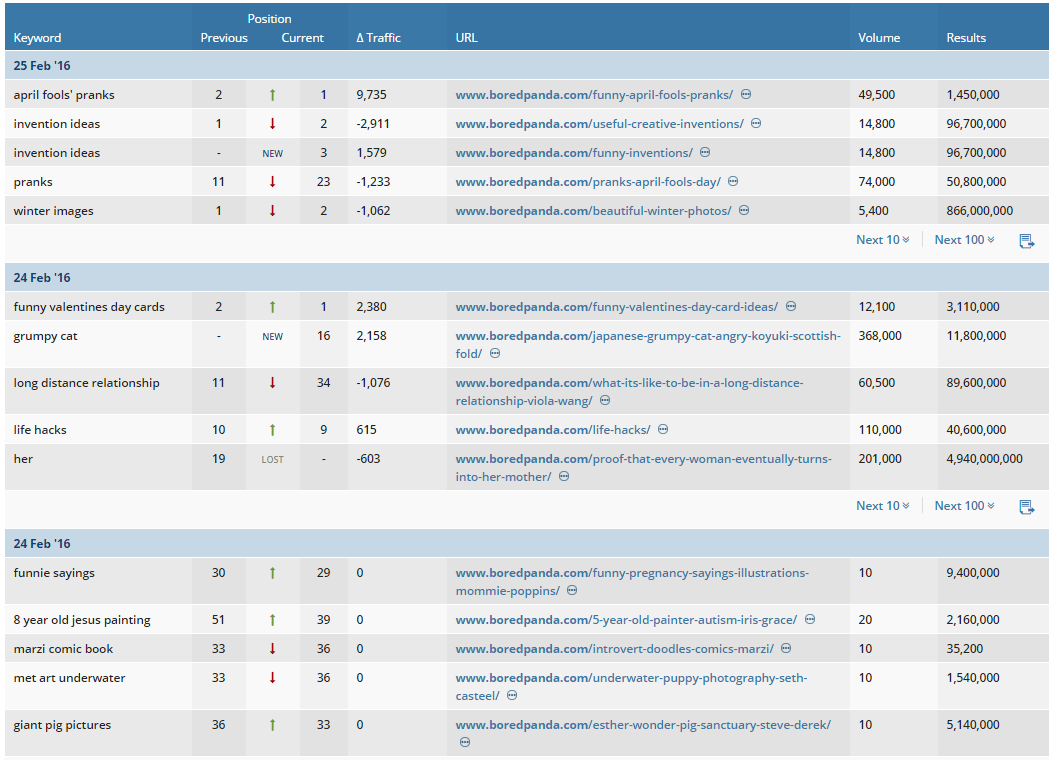
If your opponent is suddenly on top of the keyword or on the Top of the page, their content is related to the keyword and related to the page meaning they are playing fair-play.
However, if there is no sign of sharing on social networks like Facebook, Google+, . you should review this.
Step 4: Analyze the page
If you notice something suspicious in your opponent's rankings, you can delve into their content to determine the cunning tactic they are using.
Keyword stuffing is one of the most popular methods. To see if your opponent is using this method, you can follow the steps below:
Visit a high ranking site and try "rummaging" their content. If the content is repeated, many keywords and keywords are long, even if the keyword doesn't mean . this means they can't get to Top.
Similarly, check their keyword navigation bar. If the tabs are readable . there is some mistake or mistake here.
Internet storage tools like WayBackMachine will help you identify changes that your competitors have made. Compare their Web site interface before any changes appear on the rankings to see what affects them, impacting their ranking position.
Such as:
- Hidden keywords.
- Keyword stuffing.
- Different site structure.
- Purpose different keywords.
- Content content has not been introduced yet.
Step 5: Does your opponent really use Black Hat SEO techniques?
What happens if ranking position is the result of SEO hacking.
If this is the case, it is similar to a spam page created on the page and it is likely that your opponent will not anticipate this.
Check content on the Inbound page, linking issues that correlate to what your competitors are selling.
If it is an SEO tool, re-link pointing (pointing) to another page with "buy cheap Versace bags" message, it is possible that your opponent's domain is being attacked by hackers.
Also if the quality of the link inbounds unexpectedly decreases, this does not mean that your opponent is using black hat links but chances are they are becoming a victim of an SEO attack.
2. In this case, what can you do?
Although more and more competitors use SEO Black Hat to "trick" Google and achieve their goals.
Use analytics tools like Ahrefs regularly to analyze your opponents and determine whether to "deepen" your opponent?
If you find something unusual, what can you do?
Solution 1: Wait
Google is becoming "more cunning" in detecting spam Web sites and removing these pages from the statistics table.
You can wait and see if your opponent will be "downgraded" quickly, or even with a heavier penalty than Google's, that the opponent's Web site will fall into the "penalty area."
Solution 2: Take action
The second solution you can apply is to send a report as Spam to Google. However with this solution you should consider and consider carefully before acting.
Refer to some of the following articles:
- 10 principles to help quickly post top Google
- Structure of a standard SEO Google website
- The terms need to know in SEO
- SEO website process on Top Google
Good luck!
You should read it
- 10 interesting facts about black holes in the universe (Part 1)
- Discover the most bizarre black holes in the mysterious space universe
- How to use Google Keyword Planner
- How to find black and white drawings on Google
- Top best black and white wallpaper for phones
- what the aircaft black box?
- Top black cover photos for those who are sad
- How to fix Google Chrome error black screen
May be interested
- Science reveals 5 simple ways of detecting lies
 with 5 ways to be scientifically proven below, you can rely on expressions of words and expressions to detect a person who is lying. especially the last way can detect liars to 99% accurate.
with 5 ways to be scientifically proven below, you can rely on expressions of words and expressions to detect a person who is lying. especially the last way can detect liars to 99% accurate. - What is Black Sheep? learn about the origin of the word Black Sheep
 black sheep is a phenomenon that often occurs in families with many children. so, what is black sheep, what is black sheep of the family?
black sheep is a phenomenon that often occurs in families with many children. so, what is black sheep, what is black sheep of the family? - How to play Go from A to Z for beginners
 the objective of go is to surround more territory than your opponent by placing black and white pieces on the board in turn.
the objective of go is to surround more territory than your opponent by placing black and white pieces on the board in turn. - What is Black Friday?
 what is black friday and why are people crazy about black friday?
what is black friday and why are people crazy about black friday? - If you want to make black garlic successful, you must use 1 of 3 black garlic making machines
 black garlic has long been known as an effective remedy and preventive medicine by many unexpected effects. however, making black garlic using traditional methods is time consuming and also not productive. therefore, black garlic making machine was born to meet the demand of many people.
black garlic has long been known as an effective remedy and preventive medicine by many unexpected effects. however, making black garlic using traditional methods is time consuming and also not productive. therefore, black garlic making machine was born to meet the demand of many people. - How to block the black Web fastest and effectively?
 black webs contain unique information, or unhealthy websites, and we need to manipulate those sites. so are there any ways to block black sites?
black webs contain unique information, or unhealthy websites, and we need to manipulate those sites. so are there any ways to block black sites? - Make artistic black and white photos with PhotoScape
 you really want to own black and white photos of art but are still struggling to learn how to do it. please refer to our article below to manually create beautiful black and white photos in just a few simple steps.
you really want to own black and white photos of art but are still struggling to learn how to do it. please refer to our article below to manually create beautiful black and white photos in just a few simple steps. - Black Beacon: Beginner's Guide
 we'll tell you what to do and what not to do when starting out so you get off to a great start in black beacon.
we'll tell you what to do and what not to do when starting out so you get off to a great start in black beacon. - How to detect keyloggers on smartphones
 if you rely on your phone to access your bank accounts, enter sensitive messages, pay bills, or even unlock your house, a smartphone keylogger can steal this information without you even knowing. .
if you rely on your phone to access your bank accounts, enter sensitive messages, pay bills, or even unlock your house, a smartphone keylogger can steal this information without you even knowing. . - Top black avatar for sad mood
 black avatar to express your feelings of loneliness, sadness or expression of unhappy things.
black avatar to express your feelings of loneliness, sadness or expression of unhappy things.








 How does setting HTTPS affect SEO?
How does setting HTTPS affect SEO? How does Google determine local rankings?
How does Google determine local rankings? Things to remember when SEO YouTube videos
Things to remember when SEO YouTube videos What is Domain Authority?
What is Domain Authority? Why doesn't your video attract viewers?
Why doesn't your video attract viewers? 7 things to pay attention to when implementing SEO on mobile
7 things to pay attention to when implementing SEO on mobile